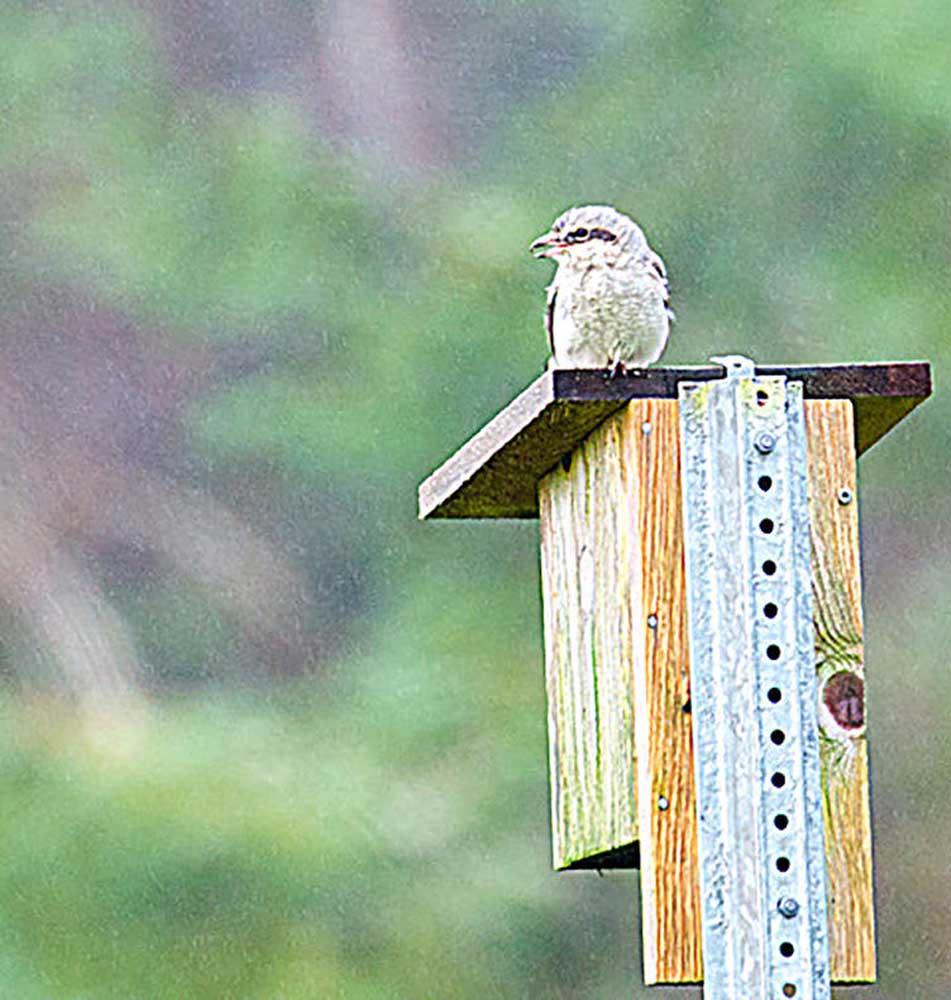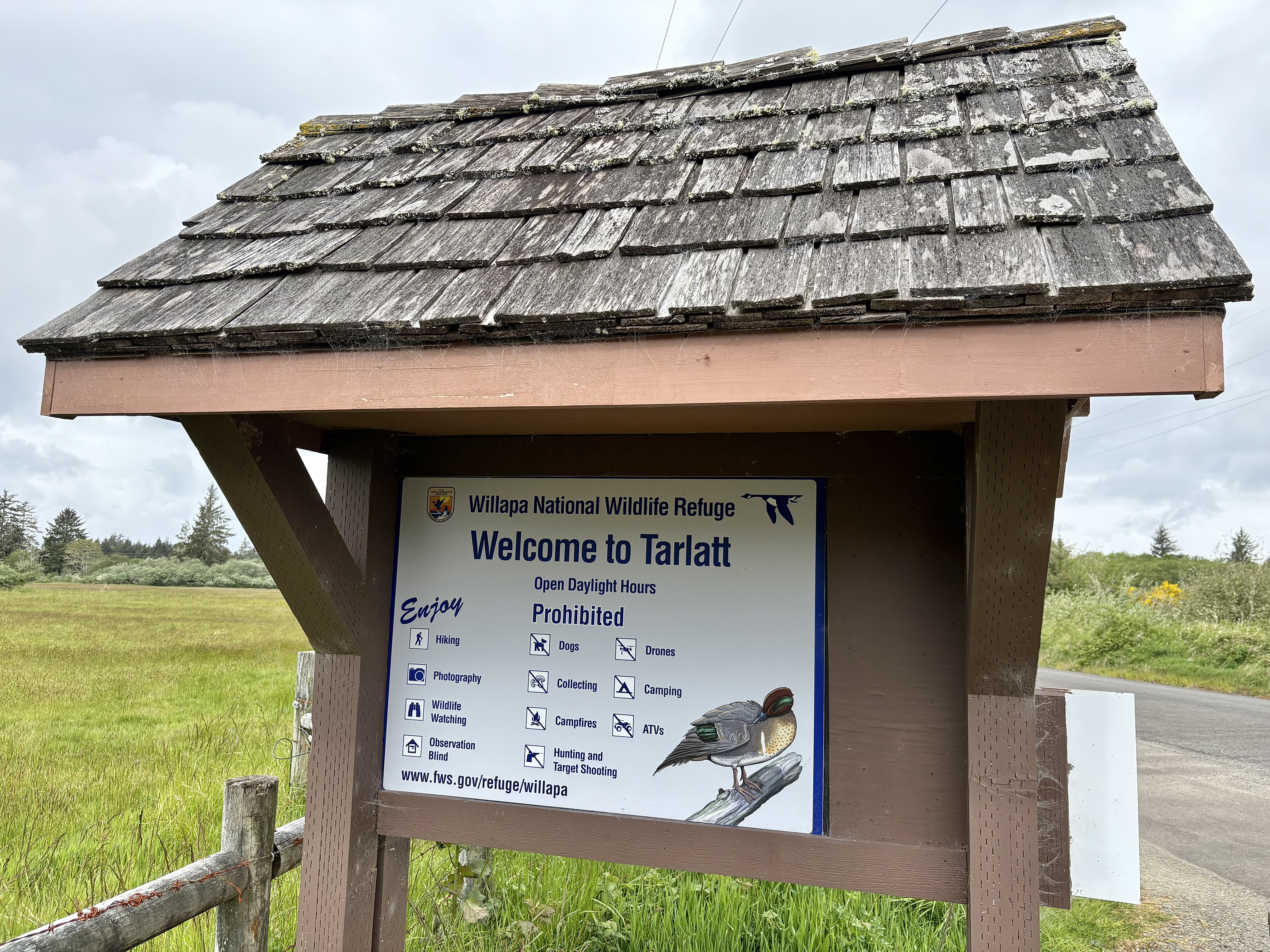Birdwatching Northern shrike: Predatory songbird observed at Tarlett
Published 11:20 am Tuesday, February 27, 2018

- This northern shrike has taken up residence at Tarlatt at the south end of Willapa Bay near the east end of 95th Street. It uses the nesting boxes as a perch when foraging for prey.
The birds of Tarlatt are at it again! Another adventure unfolded there a few days ago. In fact, two unfolded at the same time. The show being put on by the birds of Tarlatt of the South Bay Unit of the Willapa National Wildlife Refuge is second to none! As usual, Susan and I drove down 85th and 95th streets just to see what Tarlatt had to offer on this foggy day. All of a sudden, a small bird streaked across the field to land on one of the cedar nesting boxes. To our surprise, it was a northern shrike, a songbird that has the distinction of being a predator. It was a surprise because even though it is usually seen annually in Pacific county and on the refuge, it is generally hard to find. In addition, it has been several years since I last saw a shrike on the Peninsula. I’m sure it is no surprise to hear that it was also seen at Tarlatt.
Trending
Shrikes tend be loners and are found in open fields with some brush, shrubs or a hedgerow. Tarlatt is the perfect place! The birdhouses and fence posts provide the perfect lookout perches for these birds when they are foraging for prey such as rodents, lizards, small birds, and insects. Using the car as a blind we crept closer taking insurance shots as we went. The wary bird watched us carefully. All of a sudden, we were too close for comfort, so off it went, flying lickety-split over the field and wetland to settle on another conspicuous perch from which to hunt.
The northern shrike is often called the “butcher bird.” The name comes from its Latin name, which means “butcher watchman.” Perhaps the name “butcher bird” sticks because it often hangs its captured prey on thorns, twigs or barbed wire fences just as a butcher hangs meat in a meat locker. Again Tarlatt is the perfect habitat for this species because it supports this practice. This habit is a method of storing food to eat later. Shrikes are famous for capturing more food than they can eat right away.
The shrike is about the size of a robin. Its head is large and it wears a black mask. It has a stout bill with a hook at the end, which it uses along with its feet to seize prey. Overall, it has a gray back and a whitish chest and throat. Its wings are black with a white patch and its black tail has white outer feathers.
Trending
As we sat deep in discussion about our find in the fog, another but larger bird flew like a shot from behind us to the end of the refuge where it landed on the top of a very tall conifer. Can you guess what species it was? Tune in next week, for the “rest of the story”!









